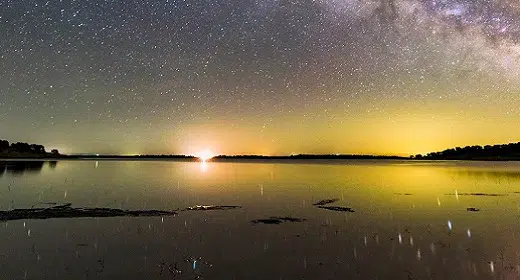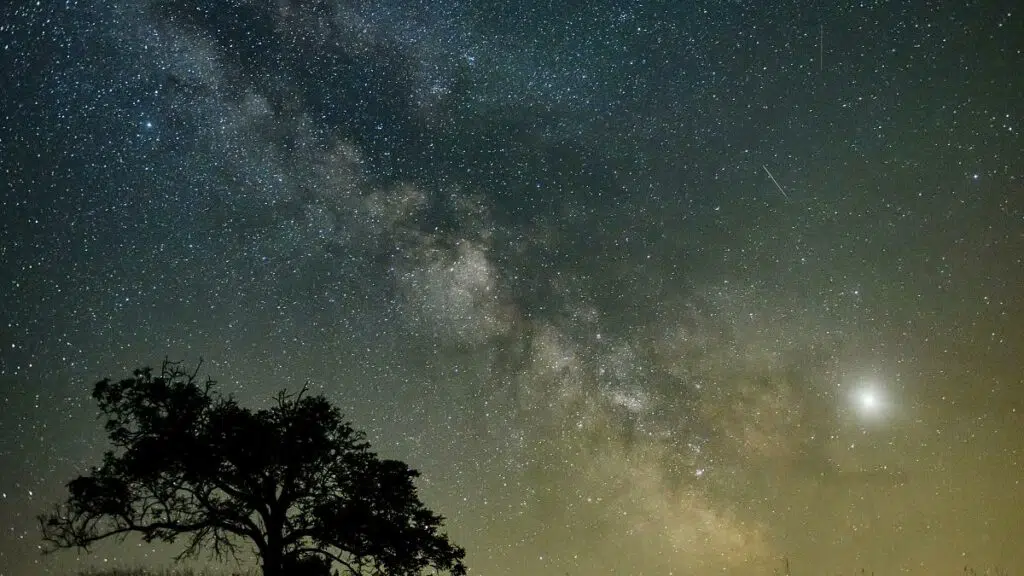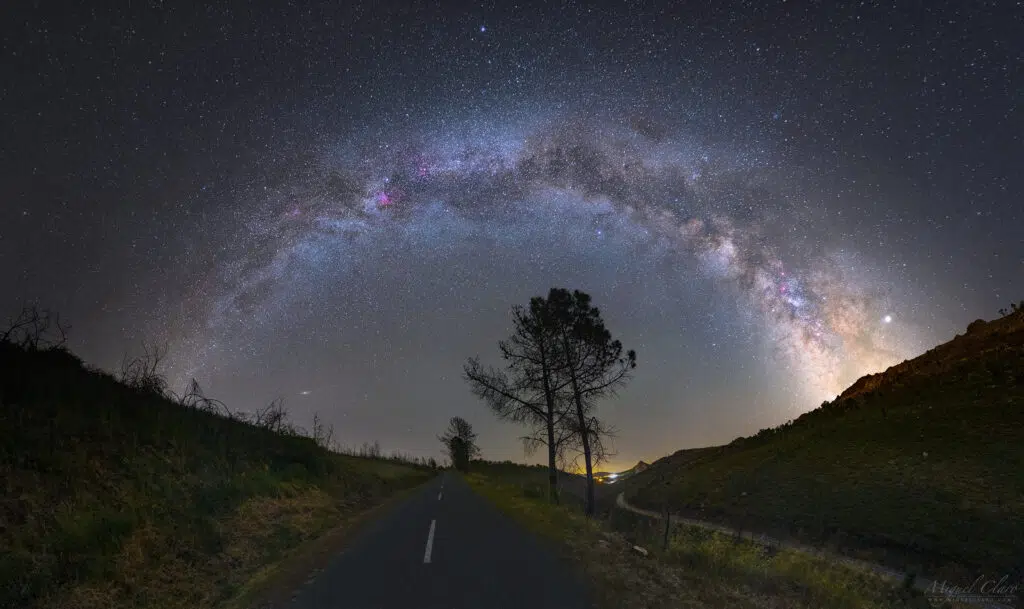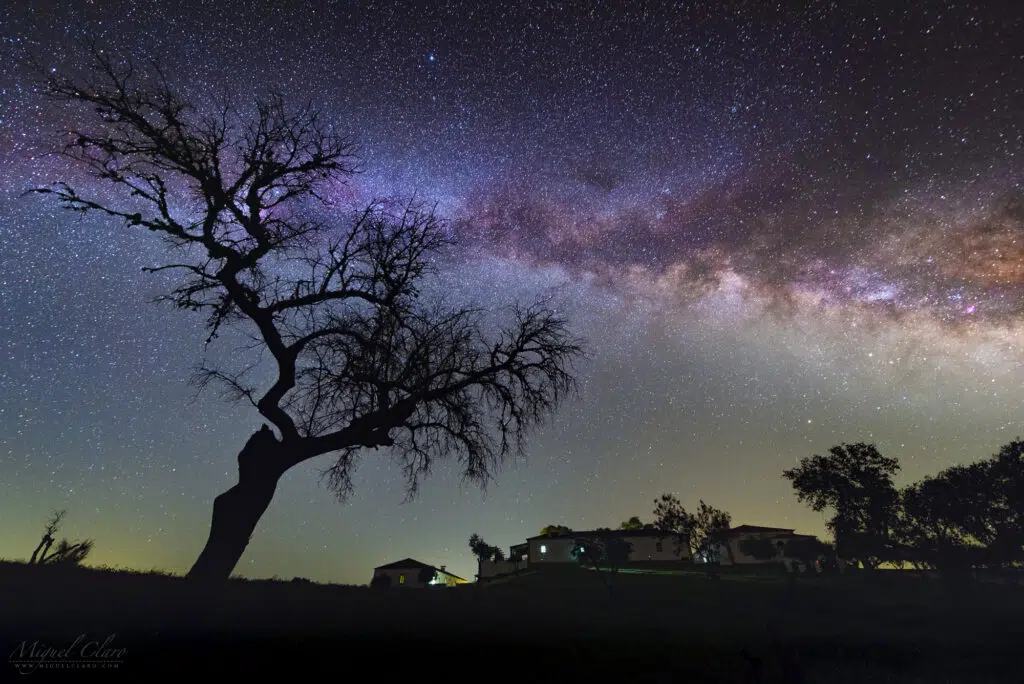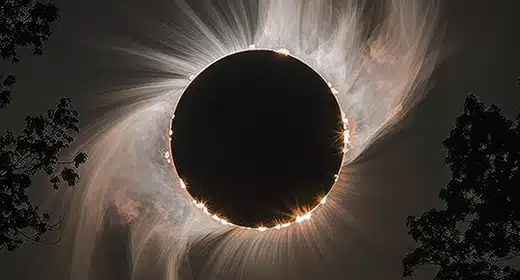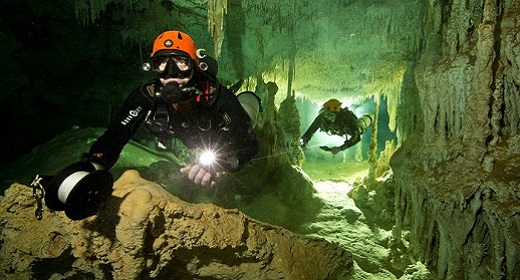By John Silcox: Home to Portugal’s “mountain of stars” and some of Europe’s least light-polluted skies, the Alentejo region is best seen at night…
long twisting road leads up Portugal’s highest mountain, and here, unlike many other European summits, visitors can drive right to the top. The peak rises 1,993m above sea level, and although its actual name is Torre (tower), most people just call it by the same designation as the range it lofts over: Serra da Estrela or “mountain of the stars”.
By day, the drive offers wonderful views across the undulant landscape of this narrow country – from the red hills of Spain in the east to the blue Atlantic Ocean in the west. However, the real spectacle comes as the sun starts to drop. Not only is this mountain a popular spot to watch golden sunsets, but for those who stay later, it offers a glimmering night-time fresco that covers the heavens, made up of millions of white pinpricks scattered in glorious imperfection.
Over the past decade, Portugal has gained recognition for being one of the top places in the world for travellers to observe the night sky, thanks to the creation of the 3,000 sq km Dark Sky Alqueva reserve, in Portugal’s central Alentejo region. In 2011, the reserve was certified as the world’s first Starlight Tourism Destination by the Starlight Foundation, a Unesco-supported international organisation that promotes science and tourism. This status celebrates the region’s ideal viewing conditions (low levels of light pollution and an average of 286 cloudless nights per year, which result in some of Portugal’s darkest skies), but also the wider tourism infrastructure it has inspired, which is set up to cater specifically to stargazers.
Dark Sky Alqueva is also the starting point for a stunning three-hour road trip that takes you through some of the least light-polluted parts of Europe, winding along the area’s Dark Sky Route (a curated collection of activities and accommodations), and rising all the way to Portugal’s highest peak, fittingly called the Serra da Estrela, or “mountain of stars”.
My friend and I began our intergalactic journey 300km south of Serra da Estrela on a particularly dark night in the village of Cumeada, where a school has been transformed into Dark Sky Alqueva’s observatory, which hosts stargazing sessions and astrophotography exhibitions. Here we met Miguel Claro, a guide and Dark Sky Alqueva’s official photographer.
“Portugal is waking up to this immensely unique and valuable natural resource that has long been underappreciated,” Claro said. “Dark Sky Alqueva is the astronomical equivalent of the giant wave ‘discovered’ by surfers in Nazaré – something that had been hiding in plain sight, waiting for people with the right sensitivity to take a closer look.”
Claro is a deep-space specialist, and when he is not taking groups on night-time stargazing expeditions, he spends his time photographing far-away objects like nebulae, galaxies and star clusters. These are things that can look faint and underwhelming to the naked eye or even through an eyepiece of a telescope but explode with colour and detail when photographed.
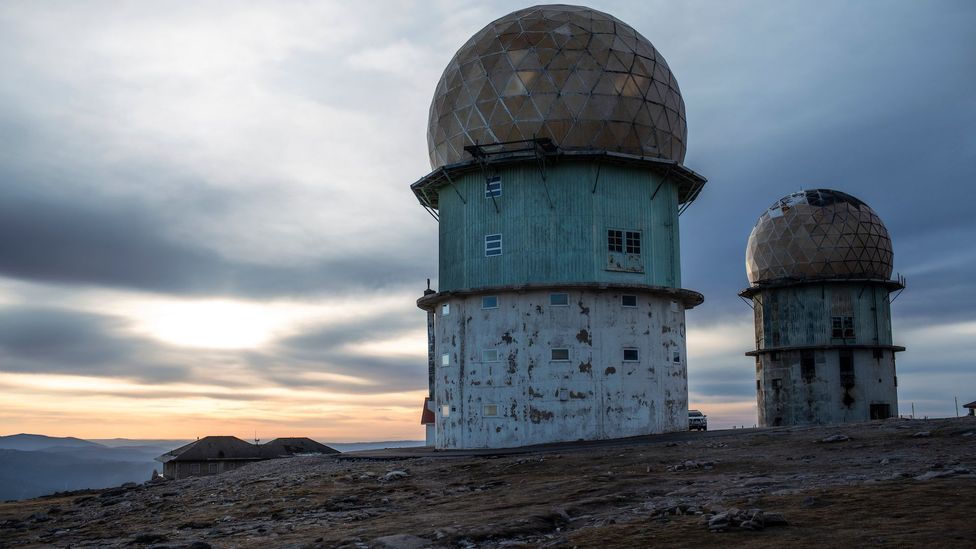
“We have excellent weather, very little cloud cover and a lack of light pollution…, which makes it perfect to shoot the sky,” said Miguel Claro (Credit: Sam Christmas)
“To get good images you need very specific conditions,” he said. “Luckily here we have excellent weather, very little cloud cover and a lack of light pollution or heavy air traffic, which makes it perfect to shoot the sky. Unlike the coastal areas that have long been developed, the Portuguese backcountry remains scarcely populated and undisturbed, which makes it much easier to pick up light sources from outer space without interference.”
The Cumeada Observatory is open every night from Tuesday to Saturday year-round, and travellers can come to observe the Moon, the stars and the Sun using binoculars and telescopes. Claro expertly guided us on a heavenly tour of constellations and planets, as well as the Milky Way and the Orion Nebula.
The next morning we travelled through time rather than space, arriving just before sunrise at the 7,500-year-old stone circle of Almendres Cromlech, another landmark on the Dark Sky Route, located near the Unesco World Heritage city of Évora. The biggest prehistoric monument on the Iberian Peninsula isn’t gated and can be visited by day or by night – it looks especially awe-inspiring under the pale glow of the moon.
Despite predating Stonehenge by at least 1,000 years, Almendres Cromlech was only brought to the attention of the scientific community in 1964 and doesn’t get anywhere near the same footfall or levels of protection. Still for Mario Carvalho, a local guide and experimental archaeologist, it could teach us more about early humans’ in-depth understanding of their world, by day as well as at night.
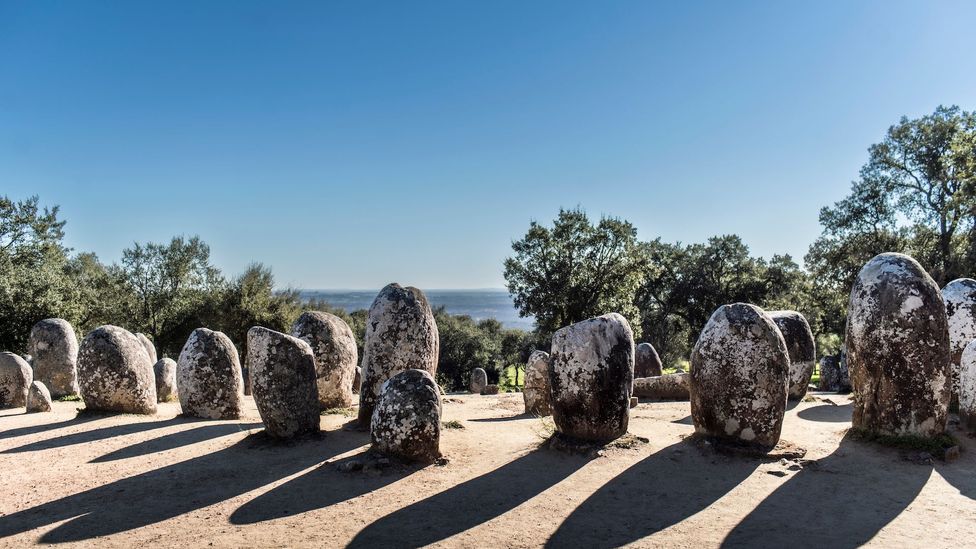
Despite predating Stonehenge by at least 1,000 years, Almendres Cromlech was only brought to the attention of the scientific community in 1964 (Credit: Sam Christmas)
“This stone circle is organised in a very complex way,” he explained, as he showed us around the site. According to Carvalho, the stones follow a much more complicated equinoctial orientation than the one Stonehenge uses, which is based on the winter solstice. To find the equinox, the builders would have spent years observing the rising and setting of the Moon and the Sun, which suggests that the population was sedentary rather than nomadic, reflecting a monumental shift in human activity at that period.
“It basically shows us the beginning of farming,” said Carvalho. “And sites like this show that from the earliest times we have looked towards the sky for answers. Then during the Age of Discovery, Portuguese navigators used the stars to guide them to the New World and beyond. It’s interesting that today we seem to have renewed interest in outer space with the dark sky movement.”
Driving through the sleepy countryside of the Alentejo, it was surprising to see how little things have been affected by modern development. Large swaths of land are still farmed in the same way they would have been hundreds, if not thousands, of years ago, with small herds of animals grazing under the cork oaks and olive groves. The whitewashed villages also tell a story of their own: street names echo new lands across the sea, and ancient churches boast frescos of navigation and adventure.
Above it all hangs the area’s star-filled canopy. It’s a draw by itself, but Apolónia Rodrigues, the founder of Dark Sky Alqueva, has been working to bring more to the table in terms of tourism offerings. “The Alqueva Dark Sky Route is a network of local accommodation owners who support stargazing,” she explained. “Many now stay open outside of peak season, offer late check-in times and receive guests all though the night, off the back of nocturnal excursions. They also have more flexible catering options and packed meals to take out into the field.”
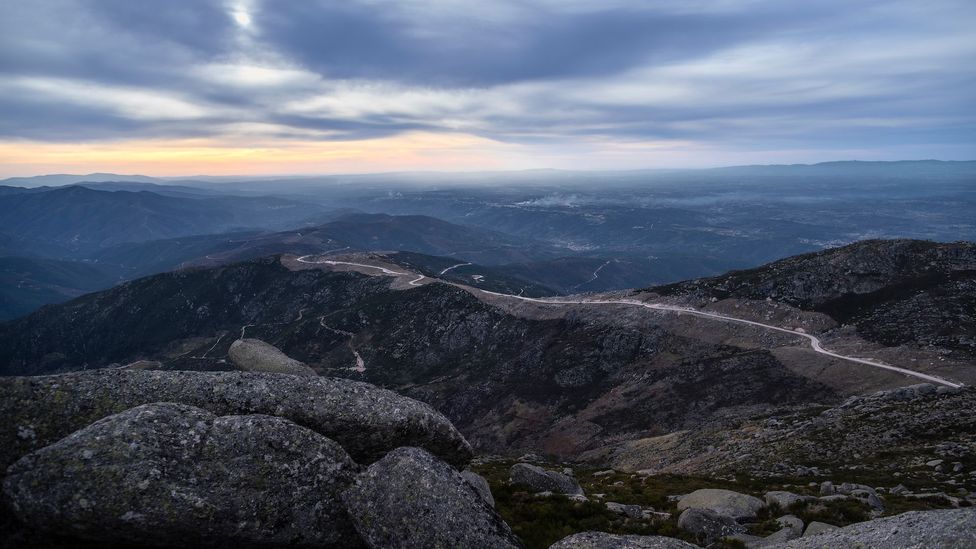
Dark Sky Alqueva boasts an average of 286 cloudless nights per year (Credit: Sam Christmas)
She has also worked with partners to develop memorable activities, such as moonlight wine tasting, night canoeing and weekend-long festivals called “star parties”. And then there are all the other daytime experiences than can be added to the region, such as visits to historical sites and cultural centres, as well as fantastic local cuisine and wine.
Rodrigues sees stargazing as an essential part of Portugal’s sustainable tourism future. Mass tourism is not the aim, but rather maintaining a healthy balance between local development and environmental preservation. She is using lessons learned at Dark Sky Alqueva to help found additional dark sky reserves further north in the country that also provide favourable star-viewing conditions.
During the final stretch of our journey, a succession of tight hairpins overlooking steep drops required us to keep our wits about us as we made our way to our last stop: the Serra da Estrela mountain range. Near the summit, we met Natalina Correia, a Portuguese national on a road trip with her boyfriend; they are visiting the mountain for the first time.
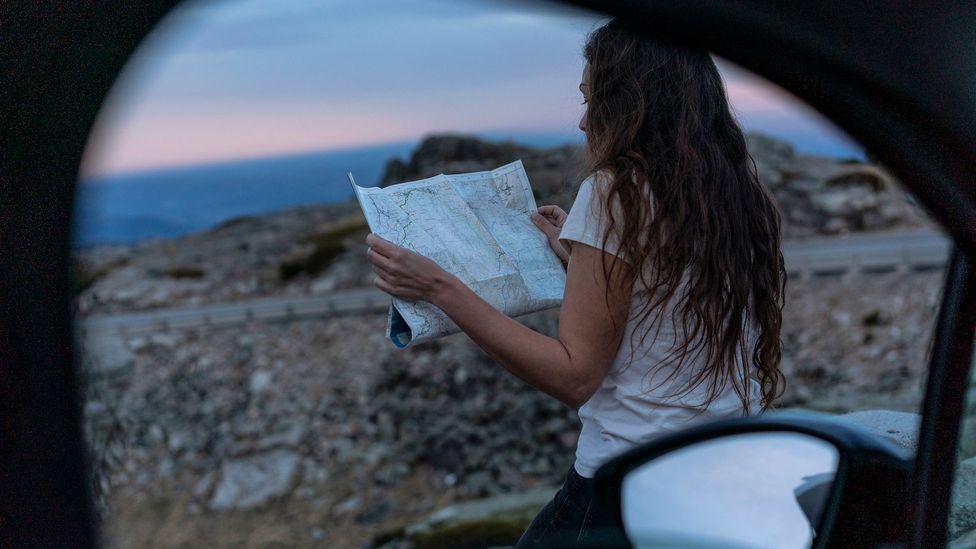
Near the summit, we met Natalina Correia, a Portuguese national on a road trip with her boyfriend; they are visiting the mountain for the first time (Credit: Sam Christmas)
“My boyfriend enjoys driving on more challenging roads, and here the main roads are absolutely fantastic,” she said, gesturing at the snaking grey tarmac that cut through the bold landscape ahead. “From here you can see all the way from Spain to the sea – it’s incredible. The Portuguese coast is unrivalled for sunsets as it faces due west, but up here it’s even more impressive.”
The pair settled on a spot near an abandoned old observatory and Portugal’s highest police station. It made for a pretty picture, the geometric architecture contrasting against the natural rock formations and the pink-red sky.
The summit was indeed a glorious location to see off the end of the day and made for a good opportunity to reflect on everything we had learnt on the road. Then true to its name, the mountain of stars began to reveal its full treasures as the night set in. Thanks to our time in the observatory, we could now name some of the constellations, planets and nebulae that slowly came into view.
However, the most poignant lesson of all was perhaps about the value of properly observing our surroundings. The stars are – like many of the most beautiful things in life – slightly hidden from direct sight, but simply spellbinding once we take a proper look.
The Open Road is a celebration of the world’s most remarkable highways and byways, and a reminder that some of the greatest travel adventures happen via wheels.







